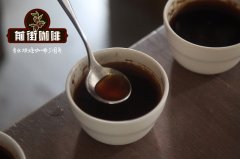The production time of Brazilian boutique coffee is introduced in the large coffee bean producing countries in the world.

Professional coffee knowledge exchange More coffee bean information Please pay attention to coffee workshop (Weixin Official Accounts cafe_style)
[Brazil] Origin
Brazilian coffee refers to coffee produced in Brazil. There are many types of Brazilian coffee, and like other Arabica coffees, Brazilian coffee is known as Brazilian coffee "Brazils" to distinguish it from "Milds" coffee. The vast majority of Brazilian coffee is unwashed and sun-dried, and is classified according to the state of origin and port of shipment. Brazil has four states with the highest yields, which together account for 98% of the country's total production: Parana, Sao Paulo, Minas Gerais and EspiritoSanto. Cooperativecorp has plantations of excellent origin in both states
Although Brazil produces 30 to 35 percent of the world's coffee annually, ranking first in the world, no Brazilian bean is considered top-class coffee. Coffee trees abound in the southern regions of Brazil, but only Santos can be brought to the table; most of the other lightly processed beans are used to make instant coffee and easy-to-open coffee. Sandos coffee grows in the Sao Paulo area, named after the export port Sandos, and is a descendant of the Arabica tree that came from the Island of Bourbon (today's French Reunion Island, located in the Indian Ocean east of Madagascar) in the 18th century. Bourbon)。Before the age of three to four years, the boubon coffee tree produces small, twisted beans called boubon sandos, which are the most advanced Brazilian beans and are often referred to as "Brazil" in cafes.
After the age of three or four, Bubang coffee trees only produce large, flat beans called Flat Bean Santos, which are cheap and unpopular with coffee people. Bourbon Sandos has no outstanding personality, taste is plain, texture is medium, sour is ordinary, usually used as a base of mixed coffee, specially set off other coffee. But it does have one special feature: it's rich in oil, a welcome bonus for people who don't like to mix Espresso blends with Robusta beans-it promises to give you a thick crema.
Brazil also has a "Rio" bean, exported from Rio de Janeiro, which is also famous, but its name is not because it tastes good, but because it tastes strange. It has a strong, offensive iodine smell, which coffee experts call Rio; another infamous term associated with Rio beans is used to describe a slightly pungent medicinal taste, called Rioy, caused by the continuous fermentation of coffee berries dried on trees during drying, often found in dried Rio beans.
Important Notice :
前街咖啡 FrontStreet Coffee has moved to new addredd:
FrontStreet Coffee Address: 315,Donghua East Road,GuangZhou
Tel:020 38364473
- Prev

History of coffee bean growing areas in Brazil, a big coffee producing country in the world, the characteristics of Brazilian coffee beans taste
Professional coffee knowledge exchange more coffee bean information Please pay attention to Coffee Workshop (Wechat official account cafe_style) Coffee cafezinho is Brazil's favorite small cup of strong black coffee. In Brazil, buying you a cup of coffee is a habit and an important etiquette for hospitality, just like Chinese tea. Brazil is the largest coffee producer in the world and is known as the coffee kingdom.
- Next

World famous representative coffee Colombian coffee production situation the main coffee production in Colombia
Professional coffee knowledge exchange more coffee bean information please follow the coffee workshop (Wechat official account cafe_style) Colombia's well-known representative coffee: Colombia is the world's second largest coffee exporter, accounting for about 15% of global production, its coffee trees are mostly planted in the north and south of the three mountains, only Arabica species. Although its production ranking is lower than that of Brazil, no
Related
- Detailed explanation of Jadeite planting Land in Panamanian Jadeite Manor introduction to the grading system of Jadeite competitive bidding, Red bid, Green bid and Rose Summer
- Story of Coffee planting in Brenka region of Costa Rica Stonehenge Manor anaerobic heavy honey treatment of flavor mouth
- What's on the barrel of Blue Mountain Coffee beans?
- Can American coffee also pull flowers? How to use hot American style to pull out a good-looking pattern?
- Can you make a cold extract with coffee beans? What is the right proportion for cold-extracted coffee formula?
- Indonesian PWN Gold Mandrine Coffee Origin Features Flavor How to Chong? Mandolin coffee is American.
- A brief introduction to the flavor characteristics of Brazilian yellow bourbon coffee beans
- What is the effect of different water quality on the flavor of cold-extracted coffee? What kind of water is best for brewing coffee?
- Why do you think of Rose Summer whenever you mention Panamanian coffee?
- Introduction to the characteristics of authentic blue mountain coffee bean producing areas? What is the CIB Coffee Authority in Jamaica?

